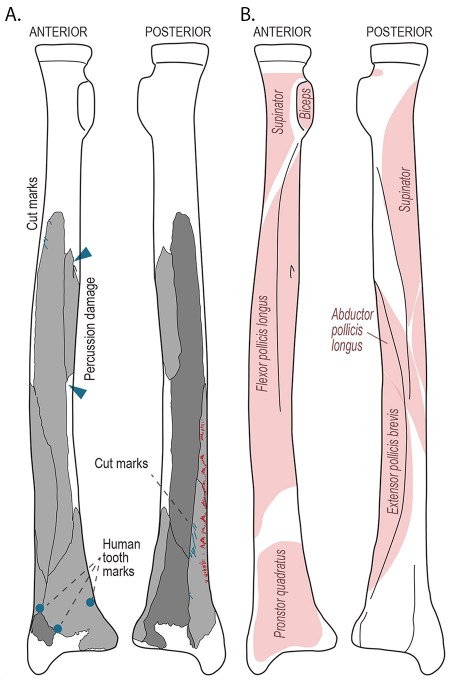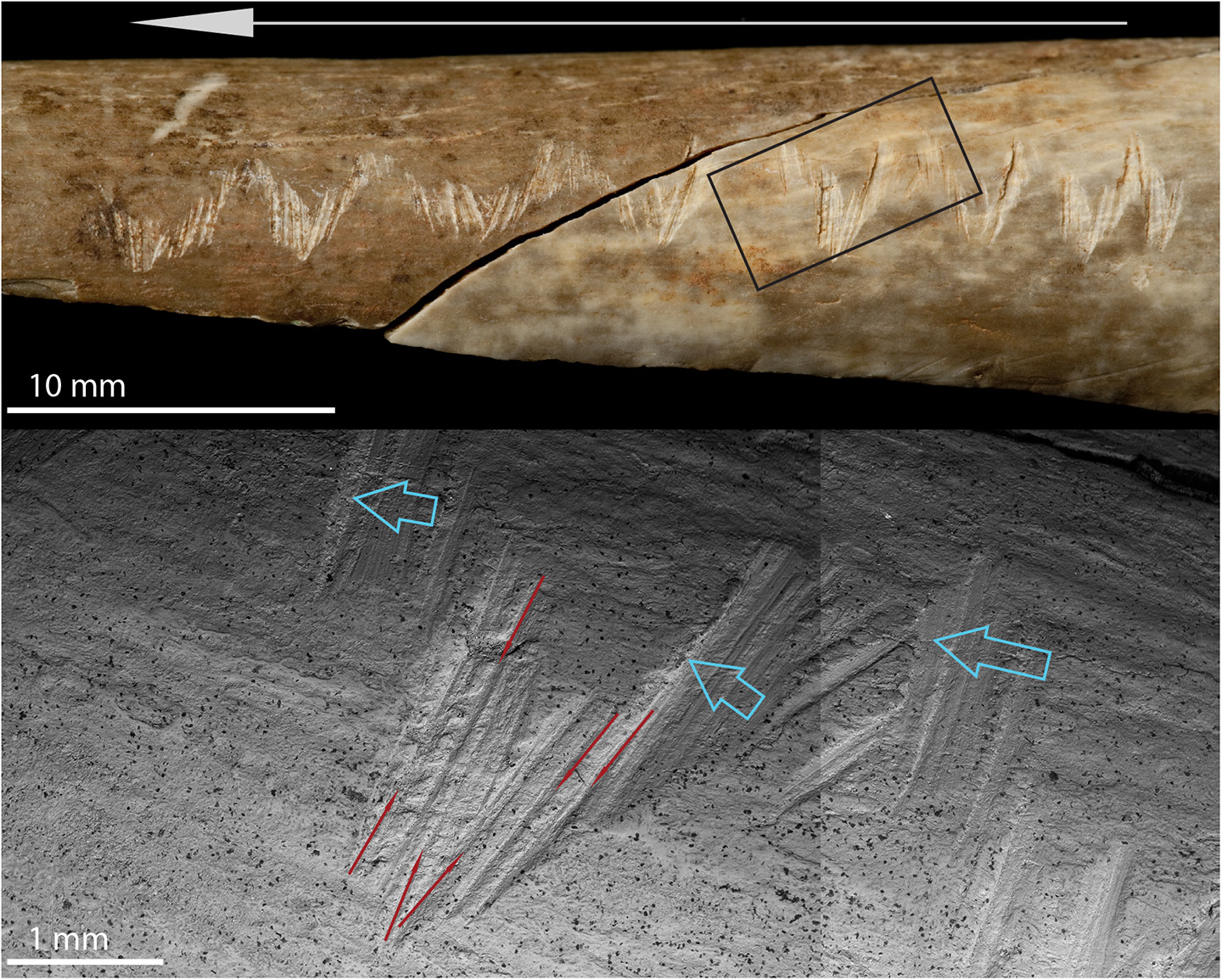New evidence of cannibalism in early humans may have been discovered on engraved bones found in an English cave.
The bones were first discovered in 1980s but recent analysis shows they may have been filleted using “sophisticated butchery techniques, decorated and gnawed by fellow humans around 15,000 years ago,” reports The Guardian.
The remains belong to a three-year-old child, two adolescents and at least two adults. Investigations of the remains had already pointed to the idea that the individuals had been eaten by fellow early modern humans. However, it was unclear what form the cannibalism had taken, whether it was for nutrition, or if it was out of desperation, or as a “homage to the spirits of the dead.”

But new analysis of a single arm bone, suggest some intention or ritualization. The bone shows what look like explicitly decorative zigzag incisions.
Chris Stringer, head of human origins research at the Natural History Museum in London, told The Guardian: “This wasn’t just a case of someone dies and then they’re eaten. The process is interrupted halfway through. They’ve cleaned off the flesh, then someone sits down and very carefully carves this design and only afterwards do they break open the bone to get the marrow out.”
The latest research was published in the journal Plos One. Previously, “skull cups”—skulls which appear to have been turned into drinking vessels—were found at the cave, which could have also formed part of an elaborate death ritual. Those bones could belong to the same individuals that are part of the latest research, but scientists have not yet verified this.

Silvia Bello, a palaeontologist at the Natural History Museum and the study’s first author, told The Guardian: “It’s something that we find horrifying, but…that was their tradition. Like we incinerate bodies or put them in the ground. It was their way of disposing of bodies, like it or not.”
Forty percent of the bones at that archeological site have human bite marks and 60 percent of the remains showed some signs of butchery.
This article was featured in the InsideHook newsletter. Sign up now.





















